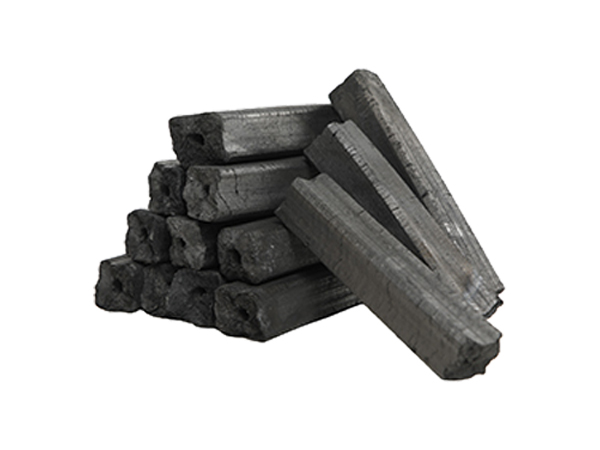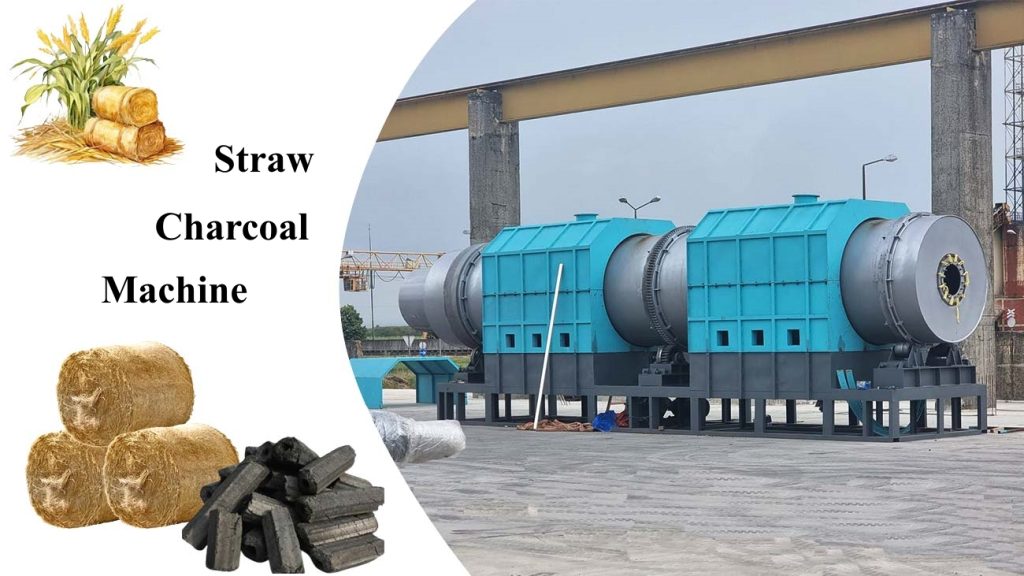Charcoal production from renewable agricultural waste has become an increasingly important topic in sustainable energy discussions. Among the many feedstocks available, coconut shells and straw are two popular raw materials. Each of these materials offers distinct properties in the resulting charcoal, from calorific value to ash content, as well as differences in processing requirements. The growing popularity of biomass-to-charcoal technology owes much to innovations such as the biomass pyrolysis plant, which enables efficient conversion of agricultural residues into valuable fuel.
Physical Characteristics of the Raw Materials
Coconut shells are hard, dense, and rich in lignin, giving them a strong structure that translates into high-density charcoal. The hard shell structure means that the resulting charcoal is durable, slow-burning, and less prone to crumbling. Straw, by contrast, is a light, fibrous material with a much lower density. Its structure leads to charcoal that is lighter, easier to crush, and more porous. This difference in density and porosity directly affects applications, as coconut shell charcoal is often preferred for industrial and barbecue uses, while straw charcoal may be better suited for soil amendment and biochar purposes.
Chemical Composition and Calorific Value
Coconut shell charcoal typically contains higher fixed carbon content and lower ash compared to straw charcoal. This translates into a higher calorific value, making it a more efficient fuel for heat generation. Straw-derived charcoal, however, tends to have higher volatile matter and ash content, which can influence burning characteristics. The difference in ash composition is also significant; straw ash often contains more silica, which can impact the end uses and disposal methods. Using equipment like a straw charcoal machine can optimize the process to improve the quality and consistency of straw-based charcoal.
Processing Requirements
Because coconut shells are harder, they require more robust crushing and carbonization equipment. This often leads to slightly longer processing times and higher energy input during preparation. Straw, in contrast, is easier to process mechanically, but its lower density means that more feedstock is required to produce the same mass of charcoal. Specialized devices like the coconut shell charcoal machine are designed to handle the hardness of the shells while optimizing the pyrolysis temperature and residence time to maximize yield and carbon quality.

Applications of Coconut Shell Charcoal
Coconut shell charcoal is renowned for its hardness and high heating value, making it ideal for cooking fuels, industrial metallurgy, and activated carbon production. Its low ash content reduces cleaning requirements, and its stable burning properties are valued in both domestic and commercial settings. When converted into activated carbon, coconut shell charcoal excels in water and air purification because of its fine micro-porous structure. This makes it a premium product in the charcoal market and a key export commodity for tropical countries where coconuts are abundant.
Applications of Straw Charcoal
While straw charcoal may not match coconut shell charcoal in energy density, it holds significant value in agricultural applications. Its porous nature makes it an excellent biochar for soil improvement, enhancing water retention and nutrient availability. Straw charcoal can also be used in biomass boilers and small-scale heating systems where high calorific value is less critical. With the right processing, straw-based charcoal can also be pelletized for more consistent fuel form. Advanced pyrolysis systems, often supplied by companies like Beston Group, have made it possible to produce straw charcoal with improved energy characteristics.

Environmental Impact and Sustainability
Both coconut shells and straw are by-products of agricultural processes, meaning that their use for charcoal production can help reduce waste and environmental pollution. Coconut shells, if left unused, may take a long time to decompose, while straw is often burned in the field, releasing harmful particulates. Converting both materials into charcoal not only provides renewable energy but also helps mitigate open burning. Furthermore, modern pyrolysis systems can recover and utilize by-products like wood vinegar and tar, adding more value and reducing environmental footprint.
Economic Considerations
From a business perspective, the choice between coconut shells and straw depends on local availability, processing costs, and target markets. In coconut-producing regions, shell-based charcoal commands higher prices due to its premium properties. In grain-growing regions, straw-based charcoal can be produced at scale with low raw material costs. Transport costs also play a role, as denser coconut shell charcoal is more economical to ship over long distances compared to lighter straw charcoal. Entrepreneurs often evaluate both material streams to diversify their product lines and cater to different market demands.
Conclusion
While both coconut shells and straw can be transformed into valuable charcoal products, the differences in their physical and chemical properties lead to distinct end uses and market values. Coconut shell charcoal excels in high-energy, long-burning applications, while straw charcoal finds its strength in soil enrichment and sustainable agriculture. With technological advancements in biomass pyrolysis plant and specialized machinery, producers can optimize quality regardless of the feedstock. The future of biomass-based charcoal lies in adapting the process to the characteristics of each raw material, ensuring maximum efficiency, sustainability, and profitability.